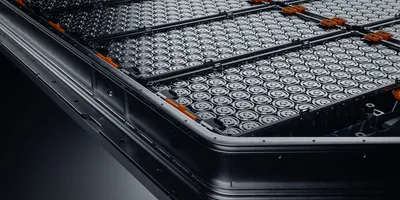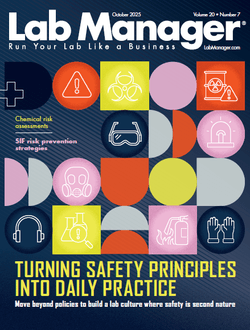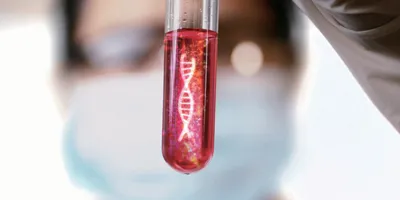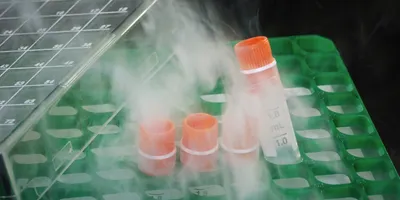Food fraud occurs when someone deliberately substitutes, leaves out, or removes an ingredient from a food without disclosing it, leading customers to believe that the ingredient is present. It is a multimillion-dollar industry that negatively affects the health of consumers and the economy.
In this interview, contributing writer Andrea Tolu speaks with Arun Chauhan (AC), founder of Tenet Law, about how food fraud techniques have evolved and how buyers can protect themselves. He then speaks with Gianpaolo Rando (GR), PhD, co-founder of SwissDeCode, about the science behind detecting food fraud and where the technology may be headed. Note: These responses have been edited for clarity and style.

Q: How has food fraud evolved in recent years?
AC: Fraudsters still use the same methods: adulteration, which is the most common one, and counterfeiting, or selling stolen goods on the black market. What changes, depending on the region, is the type of food: in Asia Pacific, there have been quite a few instances of gel being injected into shrimps; in India and Pakistan, dilution of milk is a typical issue. In Spain, the drought is creating opportunities for adulterating olive oil to drive down costs. And the UK recently had issues of rotten or inferior pork meat products being pushed into the supply chain.
However, a trend I’ve seen recently is food manufacturers being hit by digital frauds, where they pay for products that are never shipped to them. That works in two ways. One is criminals posing as ingredient suppliers. They set up a professional-looking website, telling the story of a family business that’s been around for decades and now wants to expand internationally. Then they go to a manufacturer and offer a price that is very good, but not so good that one would think it’s a fraud. The other way is very similar to what we see in the financial sector: the criminals hijack the persona of a legitimate supplier, developing a website that looks the same and with the same domain name but different extension. In some instances, they go as far as buying companies and taking over their contracts, but then they amend their processes to introduce products that aren’t meant to be in the supply chain.
Q: What can food manufacturers do to protect themselves from food fraud?
AC: One way for companies to protect their business is with traceability technology like DNA testing and blockchain. The other is to include clauses in contracts with suppliers which give them the right to audit their processes, test products, and claim damages if they find they’re being misled and place the onus on suppliers to report fraud if they have such an issue in their business.
Those better positioned to use these tools are larger organizations which have bigger budgets and market strength. Many small food producers, unfortunately, can’t afford to invest in that type of technology or suitable counter fraud controls/checks. Also, they need to reduce costs, which makes them easier targets for criminals.
Q: How vulnerable are consumers to food fraud?
AC: With the cost-of-living crisis, people are looking to buy products for as little as possible, including on the black market. Criminals exploit that by misrepresenting certain products, exposing people not only to false claims, but also to health risks, because those products might contain allergens that are not indicated on the label.
When that happens, consumers are very unlikely to be aware of it. After all, they can only report food fraud if they learn from newsworthy stories about it that help them understand the issue. The thing I get most frustrated with in this industry is the lack of publicity about civil claims to hold fraudsters to account. A lot of the time, when food businesses discover a rogue supplier, they cut it off, learn the lesson, and move on. You don’t see as many reports on these private civil legal cases arising out of this issue, and when you do, they’re not publicized due to the companies’ fear of damaging their reputation. But that’s how consumers can learn. If consumers aren’t educated, how can they ever be the voice to help blow the whistle? The best defense to any fraud issue is education, but there’s not enough of it for consumers around food fraud.
Q: What are some of the applications of your test kits for preventing food fraud?

GR: One of the most recent kits we developed is for the detection of adulteration of A2 milk. A2 cows produce milk with an ancient type of β-casein protein that is marketed as easier to digest. Because it’s sold at a premium price, it’s also exposed to the risk of being mixed with standard milk. Another application is the authentication of Basmati rice. In this case, a certificate based on a DNA test is mandatory for imports, especially in Europe, as a food fraud prevention measure. “Free from” is another important product category. Here, the goal is to ensure that vegan products are not adulterated with substances of animal origin, or vice versa, that meat products are not mixed with cheaper vegetal ingredients or pork meat.
Q: How do your DNA rapid tests work?
GR: Our test kits are based on the same principle of PCR: we look for a target genomic sequence that tells if a specific organism is present in the sample. We start with a few copies of the sequence and amplify them exponentially until we’re able to read them through fluorescent dyes. The problem with PCR is that, for it to start, the DNA you’re working with has to be pure. That in turn requires a sample preparation process that depends on lab equipment such as centrifuges and pipettes and specific technical skills to extract the DNA and purify it by removing all PCR inhibitors.
By contrast, the enzymes we use in our DNAFoil kits don’t need pure DNA to work. Liquid samples like milk are simply filtered, while cereals are ground with a disposable grinder. Once the sample is ready, the whole extraction and amplification process happens inside the kit. Further, our enzymes are stable at normal temperatures. They don’t need to be stored at -80°C or -20°C like those used in labs. That’s crucial if they are to be used in factories or farms where cold-chain shipment might not be available.
Q: What’s the potential of DNA detection technology for preventing food fraud?
GR: Although DNA detection technology can be a very effective food fraud prevention tool, it seems like its potential is still untapped. Most of the requests for new test kits that we receive are from food businesses that want to launch new products or make production more sustainable and don’t have the option of waiting for laboratory results. That may change soon, though. Some food producers have started to add DNA markers to their products. We have a project right now with a coffee producer in Brazil who’s using this technique on the plants of their specialty coffee in order to easily detect adulteration with lower-quality beans. In Switzerland, Emmenthal and Gruyère cheese are produced with cultures that contain specific bacteria that won’t affect taste or texture but provide a unique fingerprint that makes authentication easier through a DNA test. In the future, as the use of CRISPR-targeted mutagenesis on food becomes more widespread, we are likely to see more of these anti-food fraud measures applied to products.
Arun Chauhan is a lawyer based in the UK, specializing in fraud and financial crime. In 2016, he founded Tenet, a law firm that provides training and legal advice on disputes and compliance arising out of fraud and financial crime. Arun is also a regular speaker on counter fraud issues as well as an expert for the BBC and Trustee Director of The Fraud Advisory Panel, the UK’s leading anti-fraud charity.
Gianpaolo Rando, PhD, is CEO and co-founder of SwisseDeCode, a company that offers portable DNA testing solutions for food authenticity and composition. He has 15 years of experience in biotechnology and food technology and is co-inventor of the patent used in the DNAFoil tests.











